Editorial
Landslide hotspots
The government must prioritise science-guided policies and actions to mitigate risks.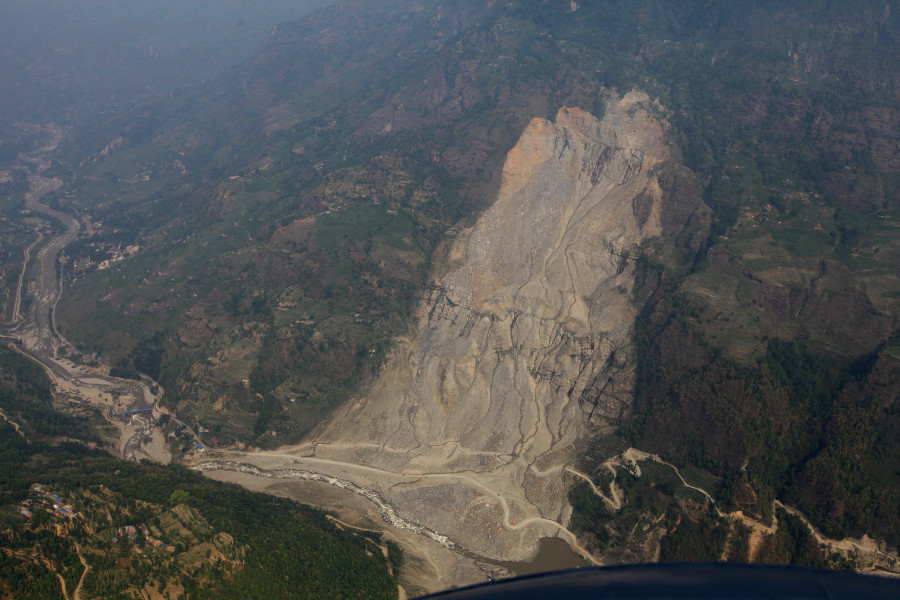
Earlier this year, in February, NASA released a quantitative study with a warning that changing rainfall patterns could trigger an increased number of landslides in Nepal. The study, which looked into the links between precipitation and mudslides in the region, projected a 30-70 percent rise in the frequency of landslides in the country, especially in areas bordering China and in the higher Himalaya.
While the NASA study warns of an increase in landslides in the region to take place in areas currently covered by glaciers and glacial lakes, landslides across the mid-hills in the country have long posed an imminent threat to human lives, infrastructure and communities living downstream. The latest findings only predict a harsher impact for Nepal where, in the last few years, unpredictable rainfall patterns have caused massive disasters killing people and animals, and destroying property and infrastructure worth billions.
Thirty-five people have already lost their lives this year in various landslide incidents triggered by heavy rainfall in the early weeks of the monsoon. According to the National Disaster Risk Reduction and Management Authority, a total of 256 water-induced incidents in the first 23 days of the monsoon have claimed at least 59 deaths and injured 106 besides causing loss of property, agriculture and livestock. Two people are still missing.
The warnings of water-induced disasters like landslides and floods are not new to Nepal where, each year, the trail of natural, emotional and economical scars they leave behind are forever fresh in the Nepali psyche. But the scale of devastation, the frequency of disasters and the location of those disasters is evidently abnormal.
More and more places outside the government-assessed landslide risk zones are reporting deadly incidents triggered by heavy rainfall in a short duration. Landslide-dammed lakes are an increasingly recurrent event while catastrophic events that wipe out entire settlements and flash floods in high mountain areas are increasingly the new normal. Clearly, we are least prepared to forecast, mitigate or recover from these annual events. This forever loops the country in a vicious cycle and pushes people further into poverty.
In addition, haphazard construction of houses and roads runs amok across Nepal’s fragile mid-hills sans geoengineering protocols or risk considerations. Building basics like slope stabilisation and proper drainage considering local precipitation have not been given proper attention, leading to landslide incidents that could have been prevented. This has further increased landslide risks to settlements across the country as new landslide hotspots continue to emerge.
Environmental Impact Assessments for mega projects are also merely taken as token procedures with zero regard to the grave consequences in store, as reported time and again. There is then little doubt that we are planning to fail, when Nepal’s alarming vulnerabilities have already been exposed, on more than one occasion in the wake of climate change.
An early tracking and warning system similar to that of the Department of Meteorology and Hydrology that monitors real-time water levels and sends out public warnings must be developed. Risky settlements must be immediately identified and moved to a safe location. Scientific risk assessments must guide government decisions on all development projects that have a direct impact on human lives, the environment and the economy.
If these killer landslides serve any lesson, the government must immediately prioritise science-guided policies and actions to mitigate the risks in the already vulnerable and emerging landslide hotspots across Nepal’s mid-hills and higher mountains. Lest we forget that the Gorkha Earthquake has left many areas scarred already.



 18.12°C Kathmandu
18.12°C Kathmandu


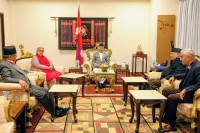

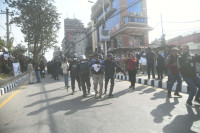
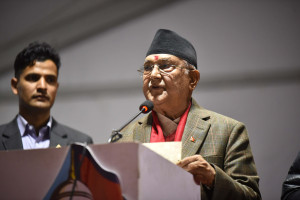
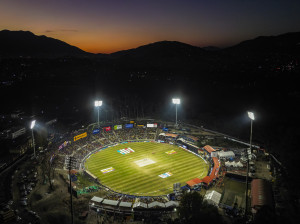
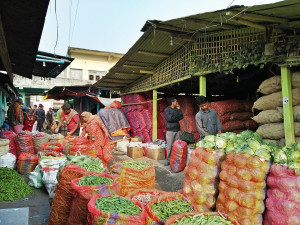
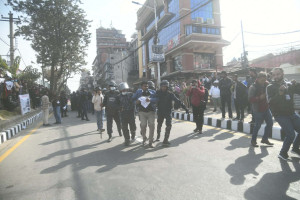



%20(1).jpg&w=300&height=200)

